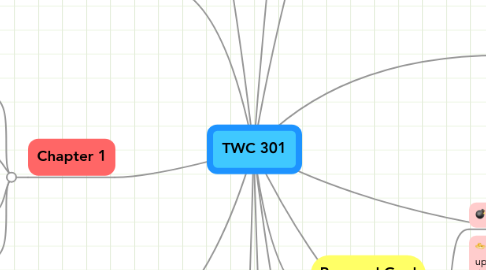TWC 301
저자: Wade Bailey


1. Rhetorical Knowledge
1.1. Identify, articulate, and focus on a defined purpose
1.2. Respond to the need of the appropriate audience
1.3. Respond appropriately to different rhetorical situations
1.4. Use conventions of format and structure appropriate to the rhetorical situation
1.5. Understand how each genre helps to shape writing and how readers respond to it
1.6. Write in multiple genres
1.7. Understand the role of a variety of technologies/media in accessing, retrieving, managing, and communicating information
1.8. Use appropriate technologies to organize, present, and communicate information to address a range of audiences, purposes, and genres
2. Knowledge of Conventions:
2.1. Learn common formats for different genres
2.2. Develop knowledge of genre conventions ranging from structure and paragraphing to tone and mechanics
2.3. Understand and apply legal and ethical uses of information and technology including copyright and intellectual property
3. Chapter 1
3.1. Decide what you want to, whats the purpose is
3.2. Who do you want to say something to, who's the audience?
3.3. Proper outlines have ideas written down a thumbnails draw in the white space
3.4. The best thing you can do is plan and prepair
4. Chapter 2
4.1. Adding Emphasis is telling reader what's the most
4.2. You needs to decide what gets the emphasis
4.3. Figure out what gets the main emphasis, second third and so on
4.4. Emphasis gives the writings something enteresting and keeps the reader entertained so they are not going to fall asleep with pages of the same exact size font and white backgrounds
5. Chapter 3
5.1. Contrast gives emphasis and adds interest to parts of writings or documants
5.2. You can use larger text to draw attention to a section and font styles to create emphasis as stated in the previous chapter.
5.3. You don't want to use to many type faces/fonts because it can confuse a reader and look chaotic.
5.4. Upper case lettering is commanding and creates a powerful feeling.
6. Critical Thinking, Reading, and Writing
6.1. Use information, writing, and reading for inquiry, learning, thinking, and communicating
6.2. Integrate previously held beliefs, assumptions, and knowledge with new information and the ideas of others to accomplish a specific purpose within a context
7. Processes
7.1. Be aware that it usually takes multiple drafts to create and complete a successful text
7.2. Develop flexible strategies for generating, revising, editing, and proof-reading
7.3. Understand the collaborative and social aspects of research and writing processes
7.4. Use appropriate technologies to manage data and information collected or generated for future use
8. Personal Goal
8.1. Pass the class in order to graduate
8.2. Hopefully not have to sign up for any other sites for this class
8.3. Get a job out of school and be able to apply information learned
9. Chapter 7
9.1. Flow is the way a readers eyes move thru a document from start to finish.
9.2. Controlling flow is the main goal for designers of documents
9.3. Flw can be controlled with faces, arrows, and perspective
9.3.1. New node
